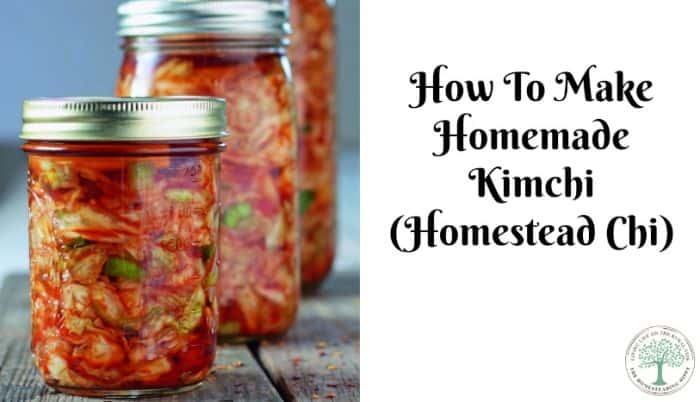When you are wanting to preserve your garden goodness, there are generally a few ways to accomplish that. You can freeze, dehydrate, can or preserve foods by fermenting.
Canning foods requires jars, a water bath or pressure canner, lids, bands and takes a lot of time.
Even fruits and jams can take at least an hour start to finish per batch. The upside of this is that you can store your foods without refrigeration after properly sealed. The downside is the initial investment of equipment and the time spent canning.
Freezing foods takes less time than canning. By freezing, you are locking on a lot of flavor and nutrition in your fruits and veggies.
The downside to freezing is that you need space in a freezer, and an investment in freezer friendly containers. If you lose power for any length of time, you may also lose your entire food harvest.

When you visit a link in this article that takes you to a different website where you can purchase something, I may earn a commission. Read my full disclosure for more details.
Dehydrating is simple and easy. You can do it via solar in a solar oven like this one or you can dehydrate in a home dehydrator like the Excalibur.
Food takes just hours to be ready to store. Once dehydrated, they can be stored on a pantry shelf, carried in a backpack, or taken camping.
Dehydrated foods take up little space and weight. The downside is that you have to re hydrate most foods before consuming.
Fermenting foods is a great way to preserve your harvest.
It’s an easy way to preserve food without power or excess heat. Ideal for families that are living off the grid, those who travel a lot while foraging and want to preserve their foods, and for those who are concerned about power outages taking out their food storage.
The initial investment in fermenting foods is minimal. Most of the time you just need salt, water and your foods. Sourdough, water kefir, and kombucha are good examples of basic, easy ferments. Easy to do and learn.
When you are wanting to get more into food fermenting, you may need some help getting started. Help knowing when the food you are fermenting is done, to troubleshooting issues, and for knowing what’s safe.
When you are just starting out, knowing what and how to preserve foods by fermenting may be difficult. Traditionally Fermented Foods aims to help even the beginner at fermenting become well adapted fast.
This book is full of delicious fermenting recipes that are easy to follow. You’ll quickly learn how to ferment as well as what foods you should try fermenting first.
I love the full color photos and the clear directions. This recipe for fermenting homemade kimchi is a great recipe to start with!
Kimchi benefits include boosting flavor of the veggies as well as adding beneficial enzymes to the food.
The vegetables already have beneficial enzymes in them. Author Shannon suggests that fermenting the foods is “taking what is already good for you and giving it wings, so to speak.”.
If you want to know how to eat kimchi, try pairing it with eggs, beans and salad. Shannon also suggests trying it mixed with a soft cheese to make a delicious spread.
I hope you love it as much as I do!
**this book was given to me for the purpose of this review, and all opinions are mine. Recipe taken from book with permission**

Fermented Kimchi Recipe
Ingredients
- 2 medium heads cabbage
- 2 large turnips
- 12 green onions roughly chopped
- 8 large garlic cloves minced
- 3 Tablespoons salt
- 3 Tablespoons ground sweet paprika
- 1-2 Tablespoons red pepper flakes can also use 1/4-1/2 cup diced hot peppers
Instructions
- Shred the cabbage thinly using a knife and cutting board or a mandolin.
- Add the cabbage and all remaining ingredients to a large mixing bowl. Mix well with hands to combine.
- Pound the cabbage with a mallet or potato masher to release the juices. Alternatively, allow to sit, covered, for 1 hour to allow the juices to be released.
- Pack kimchi tightly into a half-gallon (2-L)-size jar or 2 quart (1-L)-size jars, leaving at least 2 inches (50 mm) of headspace.
- Add the fermentation weight of your choosing. Check that the brine is above the level of the fermentation weight. If not, mix 1 cup (236 ml) of water with 1. teaspoons (8 g) of salt and pour this brine into the jar until the fermentation weight is completely covered.
- Place at cool room temperature (60F to 80F [16C to 27C], optimally) and allow to ferment for at least three weeks.
- If you haven’t used an airlock, then during this period, especially during the first 5 to 7 days, you will need to burp the jars by quickly opening them to release the built-up gases that result from the fermentation. To do so, carefully and quickly open the jar, listen for the release of gas, and close the jar back up with just a bit of the gases still remaining inside.
Notes

Heather’s homesteading journey started in 2006, with baby steps: first, she got a few raised beds, some chickens, and rabbits. Over the years, she amassed a wealth of homesteading knowledge, knowledge that you can find in the articles of this blog.
Learn more about Heather and the rest of the writers on this page.

Hi…. sounds interesting, might try it when the harvest comes in. Lived in S. Korea for 6.5 years.
Loved kimchee. While this is not the traditional way to make it and sounds westernized…. ?
I have never personally made it…
Most also included ginger and various other items not listed…. Napa cabbage is the go to cabbage.
Will keep your recipe handy for my first experiance in fermentation as I often crave kimchee.
Thank you.
True, this isn’t “traditional” in that respect, but it’s got the same bite and tang 😉 Let me know how you like it!